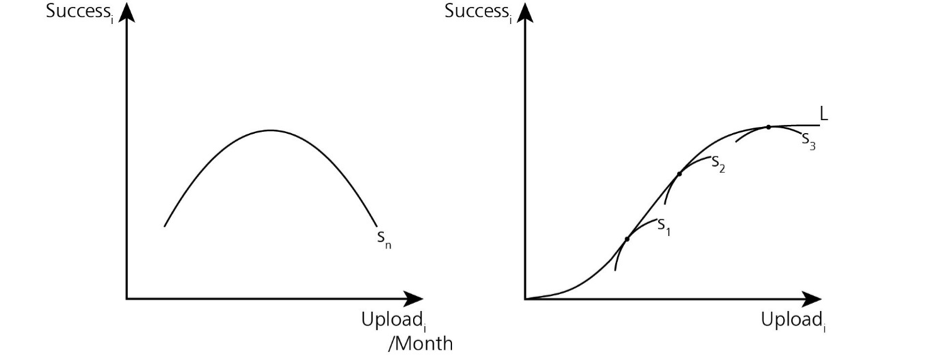
What are social media stars or so-called influencers? This new type of superstars has emerged with the growing relevance of social media like YouTube or Instagram and is of considerable economic relevance – despite its sometimes amateurish reputation. According to Forbes News, the top 10 YouTubers of 2018 earned an aggregate 180.5 million US dollars, which is an increase of 42 per cent from the year before. While their content is publicly available to consumers through the YouTube platform, social media stars earn their money mainly through their share of YouTube’s advertising revenues as well as through product placements.
Social media stars particularly appeal to a younger audience who spends considerable time watching content on social media platforms, often through mobile devices (especially smartphones). One example is gaming and e-sports where younger sports fans watch their heroes playing online games (i.e. the games they play themselves in their spare time). Make-up artists and unboxing stars that provide tips for home use of various commodities in an entertaining way represent other examples. While social media platforms offer additional interactive features and facilitate star-fan dialogs (e.g. ratings, comments, direct messages), this should not distract from the professional and commercial structures of the social media business.
Consequently, the growing reach, economic power and social influence of those stars has also drawn the attention of media economists. Our research focuses on this new star phenomenon.
We study 200 YouTubers of four different categories: gaming, people & blogs, how to & style (which includes the make-up artists and the unboxing stars mentioned above), and comedy. We apply economic theory aiming at explaining the superstar phenomenon, i.e. identifying factors and mechanisms that drive the success of the superstars. Our quantitative empirical analysis shows that not everything is new in the social media world: some success factors that fuelled popularity of stars in traditional media remain relevant for social media stars. For instance, previous success significantly influences the current success of social media stars, making survival in the market a crucial factor. Like in the traditional media world, fans prefer known qualities from stars they already experienced over newcomers of uncertain quality. Moreover, top stars can use prior success to increase their fame compared with medium-ranked stars. Due to bandwagon effects, they can extend their lead and snowball into superstardom.
But there are also new factors of the digital era. In contrast to traditional media stars, social media stars can influence their popularity by specific upload behaviours. On YouTube, content providers like social media stars can upload as much content as they want and also freely choose the frequency of uploads since no editorial gatekeeper limits the content provision and the internet is not restricted by traditional limitations of magazine pages, TV channels or broadcasting times. At the same time, attention on consumer side is volatile and scarce on the internet, as a person can only process a limited amount of information per unit of time (e.g. per day) and alternative content is just a click away. Thus, social media stars have to make sure to be continuously and reliably active and provide enough information for (attention-volatile) consumers, while not stressing their (attention-scarce) audience with too many uploads.
We find empirical evidence that a certain amount of activity positively influences success, while too much content has negative impact, potentially leading to information overload. Figure 1 illustrates the relationship between uploads and success over time. The graph on the left shows the inversely U-shaped characteristic for a given month (short-term) Sn. The one on right illustrates the long-term progression including the curve L enclosing the short-term curves. Therefore, increasing the frequency of uploads from low levels feeds additional success. However, providing too much information on high levels of supply has negative impact.
Figure 1. The relationship between frequency of video uploads and success over time

Our research aims to extend the understanding of superstars in social media markets. It demonstrates that new media channels do not erode well-known economic mechanisms from the traditional world; fundamental economic concepts apply to social media stars as well. Yet, the digital nature of the market and underlying algorithms (inter alia, recommender systems, content rankings, and search algorithms) play an important role. The management of the algorithms and strategic upload control turn out to be novel and relevant success factors for stardom in the social media system.
♣♣♣
Notes:
- This blog post is based on the authors’ paper Economics of Social Media Stars: An Empirical Investigation of Stardom, Popularity, and Success on YouTube, Ilmenau Economics Discussion Papers, Vol. 24, No. 112, presented at the Royal Economic Society’s annual conference in April 2019.
- The post gives the views of its authors, not the position of LSE Business Review or the London School of Economics.
- Featured image by Gianandrea Villa on Unsplash
- When you leave a comment, you’re agreeing to our Comment Policy.
 Oliver Budzinski is a full professor of economic theory and the director of the Institute of Economics at Ilmenau University of Technology, Germany. His research areas include industrial economics and competition policy, media and cultural economics as well as sports economics. He has published three books, more than 40 articles in peer-reviewed academic journals and more than 40 chapters in handbooks and other collected volumes.
Oliver Budzinski is a full professor of economic theory and the director of the Institute of Economics at Ilmenau University of Technology, Germany. His research areas include industrial economics and competition policy, media and cultural economics as well as sports economics. He has published three books, more than 40 articles in peer-reviewed academic journals and more than 40 chapters in handbooks and other collected volumes.
 Sophia Gaenssle is junior researcher at the chair of economic theory at the Ilmenau University of Technology since 2017. She specialises in media and cultural economics, with particular emphasis on industrial organisation and digital markets.
Sophia Gaenssle is junior researcher at the chair of economic theory at the Ilmenau University of Technology since 2017. She specialises in media and cultural economics, with particular emphasis on industrial organisation and digital markets.





